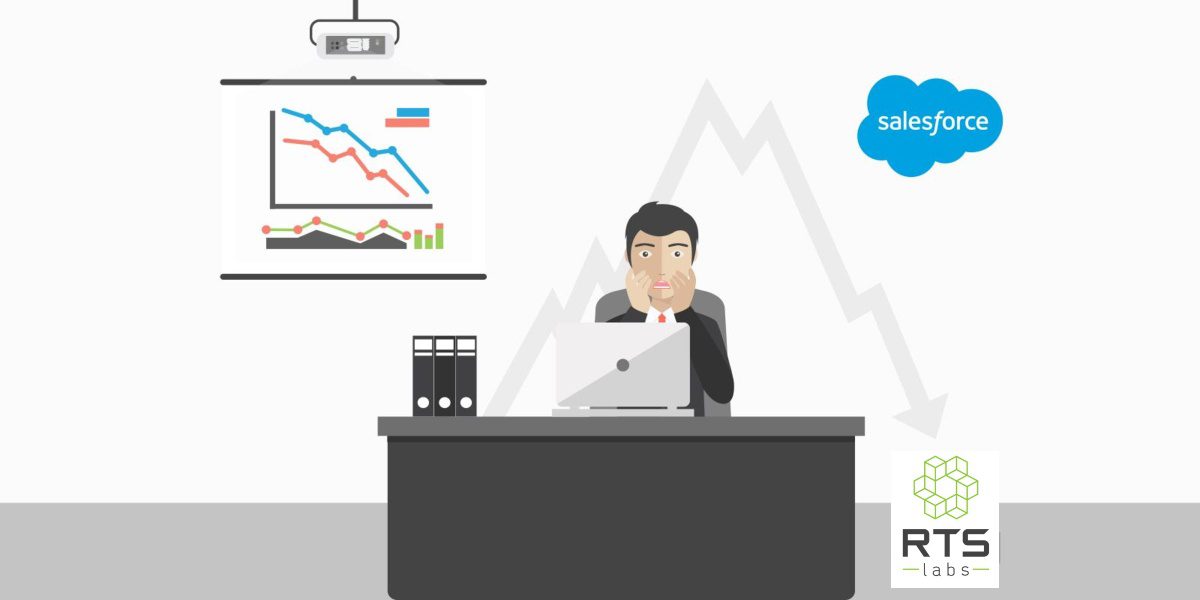Everyone who makes the decision to use Salesforce wants it to succeed. It’s the key to more customers and better customer relationships.
Yet many Salesforce implementations don’t live up to a company’s expectations. Unless you’re a Salesforce expert, the system can be difficult to implement – and Salesforce certainly isn’t cheap either. So, how can you avoid throwing away good money and being completely frustrated by the implementation process?
One good place to start: Look at what so many others have done wrong – and then do the opposite. What shouldn’t you be doing (that you might even have accidentally done already) – and what are the implications of these missteps?
Find out in this guide of what to do if you want your Salesforce implementation to fail. (And if you want it to succeed, try the opposite of all these suggestions.)
If you fail to plan, you plan to fail
Salesforce implementations have so many variables that there’s a risk of getting off track right from the start. Without a plan, you’ll have an even better chance of failing.
Start by hiring a low-priced agency as your implementation partner – someone who performs canned implementations that aren’t customized to your needs. A quick-start expert like this typically won’t be around long enough to understand your needs anyway. Since you may not see them again, you don’t have to worry about follow-up improvements that could increase your ROI.
Or, if you want to maximize your ROI, do the complete opposite. Select a quality-priced implementation partner interested in a long-term relationship.
You’ll know you’re working with a reputable agency or Salesforce development team when their first step is to take you through a discovery process. During this process, you can identify your true business goals, know where you’re headed, and determine what’s actually possible.
The second step is to break down your vision and mission into focused goals with realistic expectations. Finally, you and your Salesforce implementation partner should determine what your key metrics are, so the right reporting can be customized for you later in the development phase.
One-size-fits-all solution
The next proven-to-fail strategy is to avoid using your business goals to drive the project and the value in it. If your implementation partner takes what you say at face value, they won’t be uncovering your deeper business needs. This means they’ll focus less on what’s important, and your platform will have a better chance of not working for users.
What’s more, a Salesforce implementation that’s completed quickly won’t give an implementation team a chance to fully understand your business challenges or process issues anyway.
That’s what you want if you’re going for a low ROI. A one-size-fits-all solution might seem like a great way to get up and running quickly. However, this kind of implementation often makes Salesforce difficult to use in the long run. It would likely be lacking in automation, spit out reports that wouldn’t be very useful or insightful, and have a lower user adoption rate.
If, on the other hand, you want your implementation to succeed, do the opposite. How the Salesforce development team does it at RTS Labs is we support you at each stage of the implementation process, starting with the very first step – building your implementation team so your entire process is well managed.
Next, we dig deep with you to help define and prioritize your milestones. Thenm, you can track the progress of your Salesforce implementation more easily.
Blue-sky data plan
There’s no shortage of big picture thinking when it comes to creating a plan for Salesforce, right?
One of the most effective ways to guarantee failure is to give little thought to the flow of your data. Instead, embrace blue-sky thinking and hope everything will work out for the best in the end. You’ll likely generate few results and a lot of additional frustration by inadvertently creating lots of meetings and unnecessary or inaccurate documentation to further slow things down.
Alternatively, if you want Salesforce to succeed, create a data model. This is the secret for creating reporting that makes sense. While you might think of data as a by-product of business activity, there’s far more to it than that. Developing a data model lets you think about reporting in advance.
You’ll essentially work backwards from what you think you need, so you know what data needs to be populated in your reports.
Roll-out pandemonium
Another effective Salesforce failure strategy is to make sure users aren’t involved before or during the implementation. By waiting until your system goes live to train them, they’ll have no idea how to use the system. Or, better yet, they’ll skip training altogether.
Provided you’ve haven’t involved them in the implementation process, they won’t have bought into the system. Salespeople will assume it’s another management tactic to get them to perform data entry work.
Reality check. Get everyone on your team using Salesforce by preparing for the build-out phase of the implementation. This includes mapping your ideal processes based on your business requirements and getting everyone’s input on the process. Once a solution engineer has reviewed your requirements, they can go into your system and start customizing Salesforce to meet your needs.
Keep your building process collaborative, too. Stakeholders, your Salesforce Administrator, and your Users will be able to see how their input is used. Check with them continually in case there’s an opportunity for further improvement. Finally, make sure everyone knows what’s going to happen during rollout when you review and approve the documentation.
Salesforce ownership apathy
One way to really put the nail in your Salesforce implementation coffin is not to take ownership of the system.
That means don’t make any effort to get to know the system yourself. Don’t learn more about the system as you use it. Make sure your Admin doesn’t have easy access to the right tools or resources. Then, all the failure measures you’ve put in place will hold.
Or, if you really don’t want Salesforce to fail, make sure your implementation team and users are fully trained before going live. Start with this Salesforce implementation User training checklist, and adapt it and add to it as needed for your situation:
- Create an environment of team participation
- Give out incentives for participation
- Make training and User materials accessible
- Re-emphasize the value of Salesforce
- Routinely get User feedback (to help gain buy-in and to help Users feel like they have some skin in the game)
- Explain how User feedback helped with the launch
- Motivate with recognition
- Continually train Users (you’re not done after implementation is done)
Last but not least: Bite off way more than you can chew
You know you need an updated CRM, and it seems like a great idea to jump right in with Salesforce. Get everything set up first, then figure out how you’ll use the powerful (but complicated) system to drive business growth afterwards.
Start out with the enterprise level – with user accounts for all of your employees. Pour the money out and it should start pouring in.
What could possibly go wrong?
Or perhaps instead, take on Salesforce core elements and build from there. As cliche as it might be, you have to crawl before you can walk – especially with a complicated system such as Salesforce. Be sure you’re solid on how to get the basic building blocks of a Salesforce solution right, using iterative implementation phases, before jumping in with both feet.
As you put together your implementation plan, look at some of the specific elements that should be part of your plan, such as:
- How to get your team to adapt to Salesforce
- What to look for in a Salesforce partner
- How you want to use Salesforce
You have choices. You can work with a Salesforce consulting team to determine which elements to build on, Or, you can choose to use the newly introduced Salesforce Lightning Experience, which gives smaller operations the functionality of Salesforce without all the added baggage.
Either way, make sure you have a solid grasp of what you want to get from your Salesforce implementation first. Knowing what you really need, followed by what you would really like to have, will help guide your decisions throughout the implementation process.
A Salesforce setup to succeed
OK. Fun’s over. We hope you haven’t taken any of our bad advice to heart.
You see, bad Salesforce implementations happen all the time. Clients start by following these steps, thinking they’re doing the right thing, not realizing that they’re actually following the wrong playbook. Following steps like these are almost guaranteed to lead to the failure of any Salesforce implementation.
But now you also see the steps you can take to make your Salesforce implementation a success! We know you can’t afford to let Salesforce fail. That’s why the Salesforce team at RTS Labs is here to help you turn your troubled implementation into a success story – or better yet, to help you prevent trouble to begin with. (Because prevention always costs less than the cure, right?)
Got questions? Reach out just to have a conversation. There’s no obligation and no harm in asking – after all, a few of the right ideas could make all the difference in reducing your frustration and increasing your Salesforce ROI.






